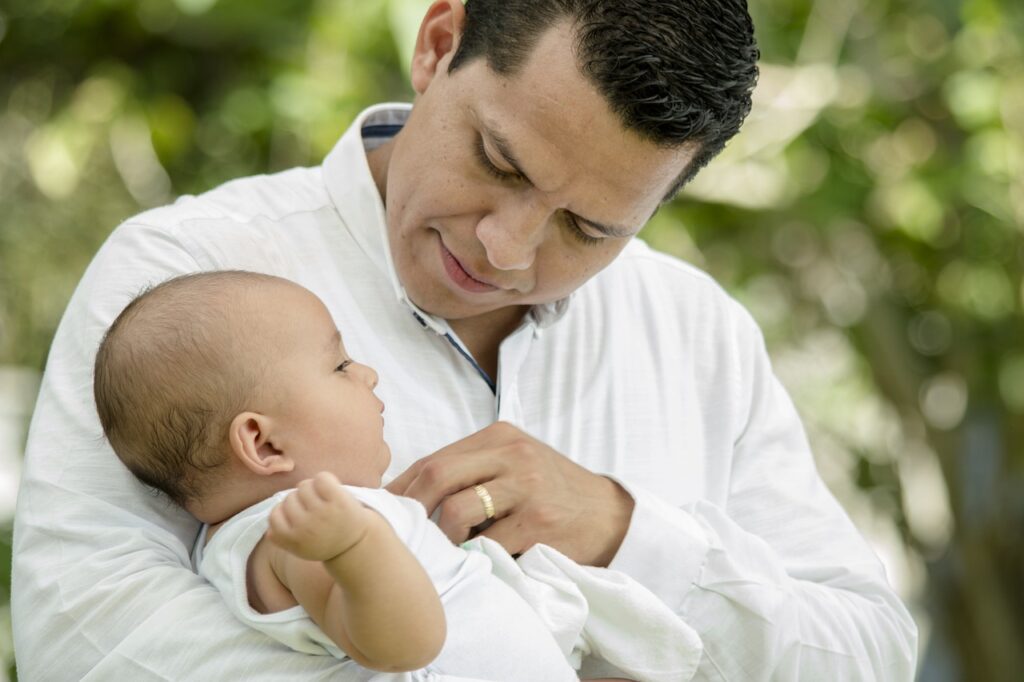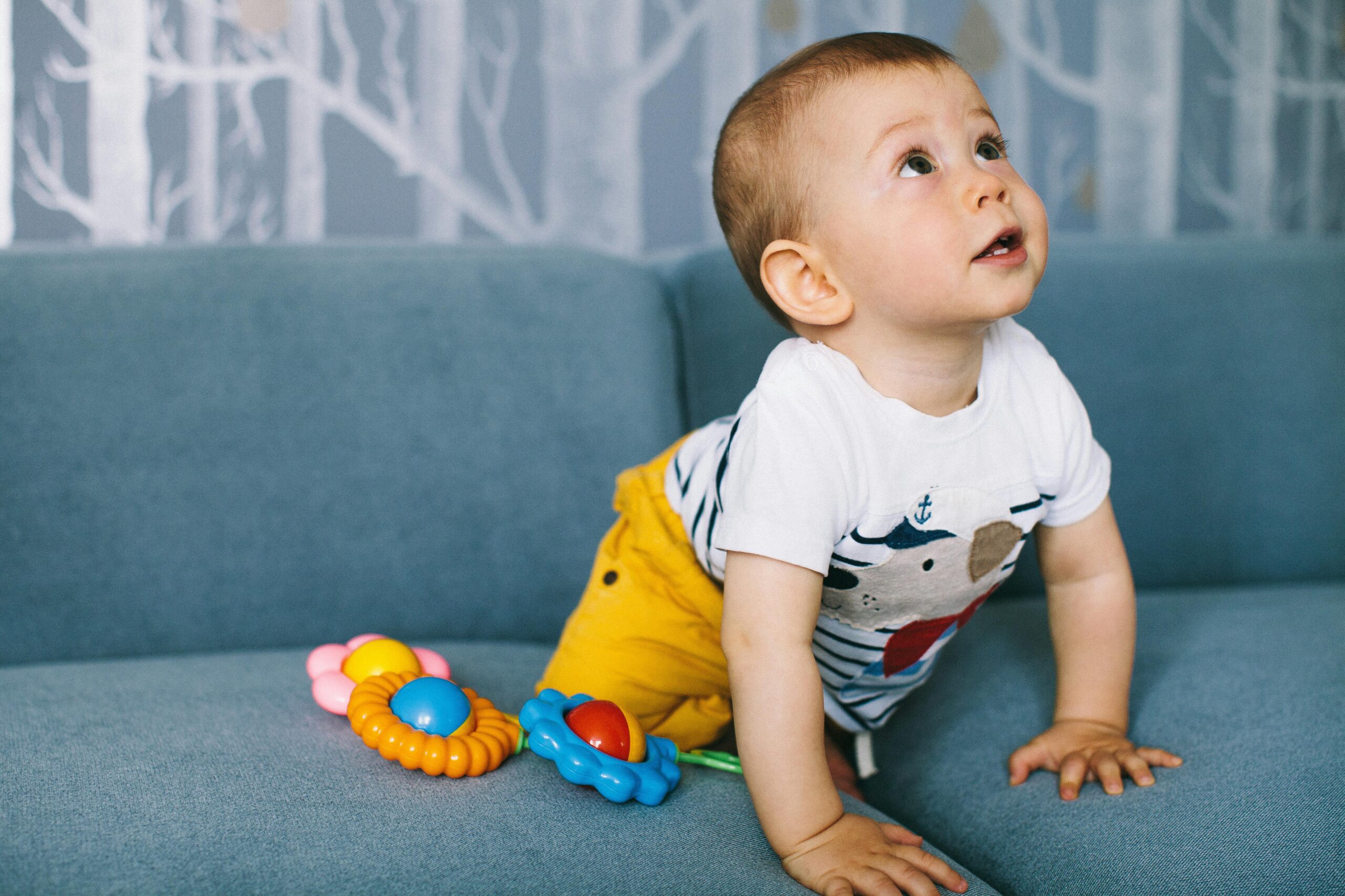
In today’s digital world, new parents face unique challenges when it comes to bonding with their babies. While technology offers numerous benefits, it’s crucial to find a balance between screen time and face-to-face interaction.
This comprehensive guide will explore the importance of personal connection in infant development and address how much screen time is appropriate for my baby, offering strategies for managing screen time in family life.
The Importance of Face-to-Face Interaction
Face-to-face interaction plays a vital role in a baby’s cognitive, emotional, and social development. When parents engage directly with their infants, they create a strong foundation for language acquisition, emotional regulation, and social skills. This personal connection is essential for understanding every step of baby milestones and fostering healthy development.
Benefits of face-to-face interaction:
- Enhanced brain development
- Improved language skills
- Stronger emotional bonds
- Better social understanding
Research has shown that babies learn best through real-life experiences and interactions with their caregivers. The back-and-forth exchanges, known as “serve and return” interactions, stimulate neural connections in the developing brain.
These interactions are particularly crucial during skin-to-skin contact, which plays a significant role in baby bonding.
The Science Behind Face-to-Face Interaction
Recent studies have shed light on the profound impact of face-to-face interaction on infant brain development. A study published in the Journal of Child Psychology and Psychiatry found that infants who experienced more face-to-face interactions with their caregivers showed increased activity in brain regions associated with language processing and social cognition.
Dr. Sarah Johnson, a leading child psychologist, emphasizes the importance of these early interactions: “The first year of life is a critical period for brain development.
Face-to-face interactions provide the sensory input and emotional connection that babies need to build strong neural pathways. These early experiences lay the foundation for future learning and social-emotional development.”


Real-Life Impact: A Parent’s Perspective
Emily, a first-time mother, shares her experience: “When I put down my phone and focused on making eye contact and talking to my baby during diaper changes and feedings, I noticed a significant difference in her responsiveness. She started cooing and smiling more, and I felt a deeper connection forming between us.”
The Impact of Screen Time on Infant Development
While screens have become ubiquitous in our daily lives, excessive screen time can have negative effects on infant development.
The American Academy of Pediatrics (AAP) recommends avoiding screen time for children under 18 months, except for video chatting with family members.
Potential risks of excessive screen time:
- Delayed language development
- Reduced attention span
- Sleep disturbances
- Decreased physical activity
It’s important to note that not all screen time is created equal. Educational content and interactive experiences can have some benefits when used in moderation and with parental guidance.
However, it’s crucial for first-time parents to avoid common mistakes, such as relying too heavily on screens for entertainment or distraction.
Research Findings on Screen Time and Infant Development
A comprehensive study published in JAMA Pediatrics found that increased screen time in infants and toddlers was associated with poorer performance on developmental screening tests at ages 2 and 3. The study, which involved over 2,400 children, highlighted the potential long-term impacts of early screen exposure.
Dr. Michael Chen, a pediatric neurologist, explains: “The developing brain is highly plastic and sensitive to environmental stimuli. Excessive screen time can displace important activities like physical play, social interaction, and exploration of the real world, which are crucial for optimal brain development.”
Global Perspectives on Screen Time
While the AAP provides guidelines for American families, it’s worth noting that other countries have their own recommendations.
For instance, the Canadian Paediatric Society advises no screen time for children under 2 years old, while the World Health Organization suggests no screen time for 1-year-olds and no more than 1 hour per day for 2-year-olds.
Strategies for Balancing Screen Time and Face-to-Face Interaction
Finding the right balance between technology use and personal interaction is key to fostering healthy development and strong family bonds. Here are some strategies to help you navigate this challenge:
1. Create Screen-Free Zones and Times
Designate certain areas of your home, such as the dining room or bedrooms, as screen-free zones. This encourages more face-to-face interaction during meals and before bedtime.
Additionally, establish specific times of the day when screens are off-limits for the entire family.
Tip: Use visual cues like a “screen-free zone” sign or a special basket for storing devices to reinforce these boundaries.
2. Prioritize Quality Time
Make a conscious effort to engage in activities that promote bonding and interaction with your baby. Reading together, playing games, or simply talking and singing can have a significant impact on your child’s development.
For instance, early swimming activities can be an excellent way to bond while promoting physical development.
Activity ideas:
- Read board books together, pointing out pictures and encouraging your baby to touch and explore
- Sing nursery rhymes with hand motions
- Play simple games like peek-a-boo or pat-a-cake
- Go for nature walks, describing what you see and hear


3. Be Mindful of Your Own Screen Use
Children often model their behavior after their parents. Be aware of your own screen habits and try to limit device use when interacting with your baby. This sets a positive example and shows the importance of face-to-face communication.
Practical tips:
- Set specific times to check your phone, such as during nap times
- Use apps that track and limit your screen time
- Keep your phone out of sight during playtime and meals
- Practice mindfulness techniques to stay present with your baby
4. Use Technology Intentionally
When you do incorporate screens into your family life, choose high-quality, age-appropriate content. Engage with your child during screen time by discussing what you’re watching or playing together.
Remember, even during necessary tasks like diaper changing, you can use this time for bonding and interaction.
Guidelines for intentional screen use:
- Choose interactive, educational content when appropriate
- Limit passive screen time, such as background TV
- Co-view content with your child and discuss what you’re seeing
- Use video calls to connect with distant family members
5. Establish Family Media Rules
As your child grows, create clear guidelines for screen use in your household. This might include setting time limits, choosing appropriate content, and balancing screen time with other activities.
Sample family media rules:
- No screens during meals or in bedrooms
- Screen time limited to 30 minutes per day for preschoolers
- Screens off at least one hour before bedtime
- Prioritize outdoor play and family activities over screen time
Recommended Products for Promoting Face-to-Face Interaction
- Battat Wooden Activity Cube: This versatile toy encourages hands-on play and exploration, providing opportunities for parent-child interaction.
- SoftScape Toddler Climber: This safe climbing structure promotes physical activity and imaginative play, reducing the need for screen-based entertainment.
- Solly Baby Wrap: Babywearing encourages close physical contact and face-to-face interaction, strengthening the bond between parent and child.
- Fisher-Price 3-in-1 Activity Mat: This versatile play mat provides various sensory experiences and opportunities for parent-child engagement.
- Hatch Restore 2 Smart Sleep Clock: While not directly related to face-to-face interaction, this device can help parents manage their own sleep schedule and reduce nighttime screen use, leading to more quality time with their baby during the day.
Expert Opinions on Technology Use in Parenting
Dr. Jenny Radesky, a developmental behavioral pediatrician and expert on children and media at the University of Michigan, offers this advice: “Technology can be a tool for connection when used mindfully.
Video chats with grandparents or looking at family photos together can be positive experiences. The key is to use technology in ways that support, rather than replace, real-world interactions.
Dr. Dimitri Christakis, director of the Center for Child Health, Behavior and Development at Seattle Children’s Research Institute, adds: “Parents should think of screens as they do junk food – best avoided, but not forbidden. The occasional treat won’t harm a child, but a steady diet of it will.”


FAQs
Q: How much screen time is appropriate for my baby?
A: The American Academy of Pediatrics recommends avoiding screen time for children under 18 months, except for video chatting.
For children 18-24 months, limited high-quality programming is acceptable when co-viewed with a caregiver. Children 2-5 years old should be limited to 1 hour per day of high-quality programming.
Q: Can educational apps and videos benefit my baby’s development?
A: While some educational content can be beneficial, it’s important to remember that babies learn best through real-world interactions. Use educational apps and videos sparingly and always with parental guidance. For children under 2, the benefits of educational media are limited, and face-to-face interaction is far more valuable for development.
Q: How can I reduce my own screen time when caring for my baby?
A: Try setting specific times for checking your device, using apps to track and limit your screen time, and finding alternative activities to engage in with your baby during downtime. Consider using products like the Hatch Restore 2 Smart Sleep Clock to manage your own sleep schedule and reduce nighttime screen use.
Q: What are some signs that my child might be getting too much screen time?
A: Signs of excessive screen time may include:
- Difficulty falling asleep or staying asleep
- Decreased interest in other activities
- Irritability or tantrums when screen time is limited
- Delays in language development or social skills
If you notice these signs, it may be time to reassess your family’s screen time habits.
Q: How can I make video calls with family members more engaging for my baby?
A: To make video calls more interactive:
- Keep calls short (5-10 minutes for young babies)
- Encourage family members to sing songs, play peek-a-boo, or read stories
- Use props or toys to engage your baby’s attention
- Follow your baby’s cues and end the call if they lose interest
Conclusion
In the digital age, balancing screen time and face-to-face interaction is crucial for healthy infant development and strong family bonds. By prioritizing personal connections, being mindful of screen use, and creating a balanced approach to technology, parents can foster a nurturing environment that supports their baby’s growth and well-being.
Remember, every family’s needs and circumstances are unique. Find the balance that works best for you and your baby, always keeping in mind the importance of face-to-face interaction in building strong, lasting bonds. Whether you’re bottle feeding or soothing a fussy baby, these moments of connection are invaluable for your child’s development.
As you navigate the challenges of parenting in a digital world, remember that technology is a tool, not a replacement for human interaction.
Strive to create a home environment that values face-to-face communication, physical play, and real-world experiences. By doing so, you’ll be laying a strong foundation for your child’s cognitive, emotional, and social development.
Lastly, be kind to yourself as you work to find the right balance. Parenting is a journey, and it’s okay to adjust your approach as you learn what works best for your family. The effort you put into creating meaningful connections with your baby will pay dividends in the years to come, fostering a strong, loving relationship that will last a lifetime.






